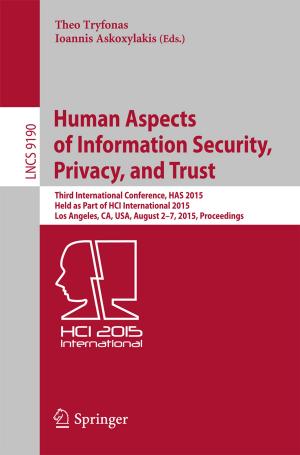Analytical Decision-Making Methods for Evaluating Sustainable Transport in European Corridors
Business & Finance, Management & Leadership, Operations Research, Nonfiction, Social & Cultural Studies, Political Science, Politics, City Planning & Urban Development| Author: | ISBN: | 9783319047867 | |
| Publisher: | Springer International Publishing | Publication: | July 26, 2014 |
| Imprint: | Springer | Language: | English |
| Author: | |
| ISBN: | 9783319047867 |
| Publisher: | Springer International Publishing |
| Publication: | July 26, 2014 |
| Imprint: | Springer |
| Language: | English |
Eurocorridors are characterized by intensive transport flows and dynamic patterns of establishment and household locations. They are also considered the backbones of powerful spatial and economic forces in the areas that connect urban regions. One of the main difficulties in the spatial planning of eurocorridors has been the need to engage in different types of collective action. Such an approach can be extremely challenging in practice, useful to researchers in the field and to professionals as well.
In the light of this, the book’s main objectives are:
- To define the problem by analyzing the key features, which include freight and passenger transport policies and issues; the territorial context, with its geographical, social, economic and cultural aspects; the plurality of subjects with different aims and resources and the lack of homogeneous information.
- To illustrate assessment models and evaluation frameworks (MCDA; Discrete Choice Analysis; Collaborative Assessments; Geovisualization Technologies) in theoretical terms and by the use of case studies.
Eurocorridors are characterized by intensive transport flows and dynamic patterns of establishment and household locations. They are also considered the backbones of powerful spatial and economic forces in the areas that connect urban regions. One of the main difficulties in the spatial planning of eurocorridors has been the need to engage in different types of collective action. Such an approach can be extremely challenging in practice, useful to researchers in the field and to professionals as well.
In the light of this, the book’s main objectives are:
- To define the problem by analyzing the key features, which include freight and passenger transport policies and issues; the territorial context, with its geographical, social, economic and cultural aspects; the plurality of subjects with different aims and resources and the lack of homogeneous information.
- To illustrate assessment models and evaluation frameworks (MCDA; Discrete Choice Analysis; Collaborative Assessments; Geovisualization Technologies) in theoretical terms and by the use of case studies.















